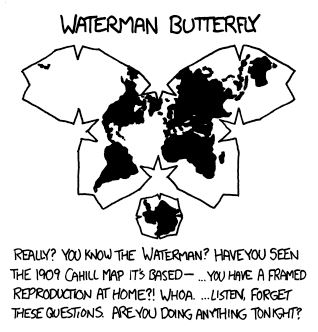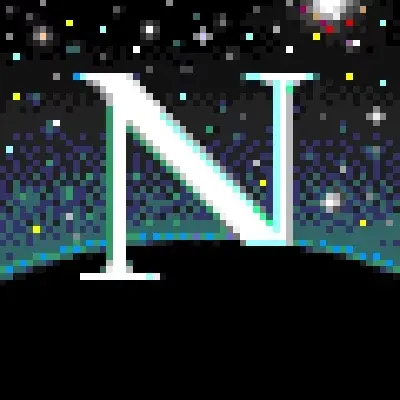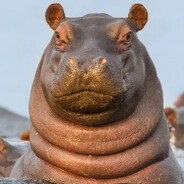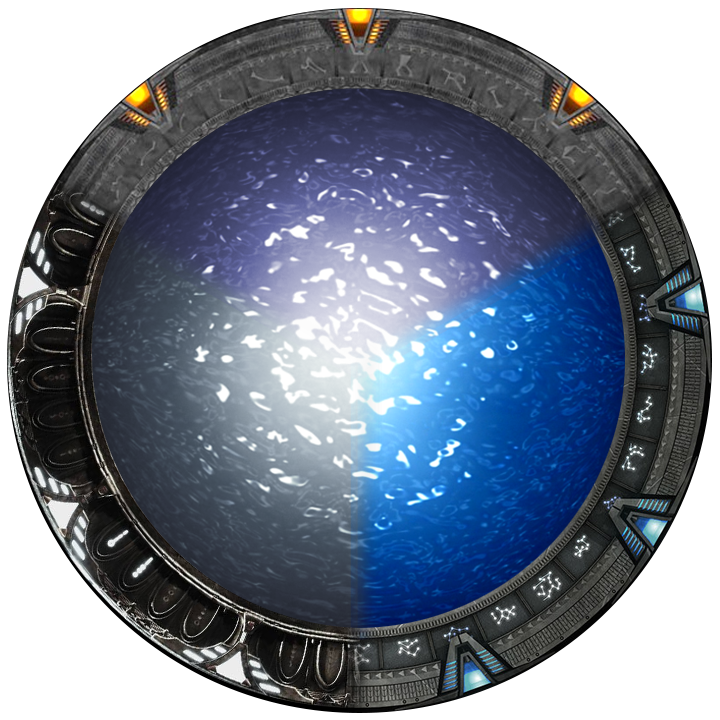Oh, I get why Jupiter our biggest planet is not here. Because its surface is made from gas, not land
It took me a split second but Jupiter and Saturn are gas giants with really no solid core. It always blows my mind.
Doesn’t Jupiter have a diamond core lol
I guess after searching, that is why we sent Juno to Jupiter?
There really is an xkcd for everything.
Being a fan of The Expanse this is really cool. It really puts the size of a lot of the moons and dwarf planets from the series into perspective. Ganymede for example, was used by pregnant mothers in the outer-system because it was large enough to still have an active core and thus a magnetosphere. Shielding the surface from a lot of radiation. Their main food crops were grown there for the same reason.
Io, Callisto, Europa, Eris, Titan, Ceres, and a few others all make appearances too. It’s an amazing series, for those who haven’t read/seen it, whether you read the books or watch the show.
It’s generally a great series but it reminds me of Wheel of Time, in that some of the main characters are incredibly stupid and don’t seem to get any better. James Holden in particular is one whose stupidity is hard to withstand sometimes. I ended up not being able to finish both of those because of that.
Yeah, most of James’ issues are just him trying to do the right thing. He tends to jump in head first at that point.
spoiler
Like him walking into a clearly radioactive room, despite warning signs being everywhere and a literal siren going off. All because he saw some injured/sick people lying on the ground and he didn’t hesitate to help.
Or flying the ship into a pile of ruble looking for the hybrid (that doesn’t happen in the book).
Holden’s favourite book, if I recall correctly, is Don Quixote… but instead of seeing it as a satire of sixteenth century Spain and chivalric tradition he sees the antics of the evidently senile and deranged protagonist as a manual of how to act.
The whole series is Holden tilting at windmills.
They’re quite well written and engaging windmills, though, and there’s a lot of great Sancho Panzas to accompany and provide a contrast to our knight errand, so it’s still a great series.
I guess it’s easy to forget just how much smaller Mars is until comparisons like this help put it in perspective.
I can’t readily recall the Earth’s actual sq. km surface area, and can’t remember ever having heard the figure for Mars. Time to drop into Wikipedia and take a gander, I think.
EDIT: I’ll be damned, TIL that the Earth has an area of 510.06 10^6 km², but Mars’ is only 144.37 10^6 km², only about 1⁄3 the size (28.3%).
The circumference is roughly 40,000 kilometers. The original definition for a meter was such that 10,000 kilometers was the distance from the equator to the poles (so a quarter of the circumference). They got the math slightly wrong and didn’t want to people to think the process was wrong so they didn’t correct it. I forget the actual circumference but that is close enough for very rough estimates.
the distance from the equator to the poles is a quarter of the circumference
Yeah idk why I got circumference and diameter mixed up. Whoops.
Pebble
mars’ surface area is approximately as big as earth’s land surface area, i.e. everything excluding oceans. since oceans cover a large part of earth’s surface, there’s that.
Damm Earth is big
Thank you! It looked very XKCD to me, so I was surprised when the source link wasn’t to that.
Edit: oops… Meant to reply to the comment with the xkcd link.
It is xkcd
Apparently I didn’t reply to the comment giving the xkcd link like I intended…
It is xkcd but my link was elsewhere with some details. It does credit xkcd.
What’s the unlabeled one?
/s
A mostly harmless area
Nice. Good entry.
They’re not noble enough to be on this map
Source states:
All Human Skin
Where?
E: found it. Tiny spot northeast of Australia.
actually surprisingly large
[tattoo artists breathing heavily]
I guess fact it’s mostly gas means I don’t have to ask, “where’s Uranus?”
But if we’re counting the liquid parts of Earth, shouldn’t we include the squashy centers of Uranus and Jupiter?
They aren’t necessarily counting the oceans, but rather the ocean floor.
The “liquid parts” of earth are just a thin puddle over basically the same solid shell covering the rest of the planet, relatively speaking. Uranus does have a small rocky core (so probably should have been included tbh), but Jupiter’s core is just liquid and doesn’t even have a clear boundary between the gas and the core.
Yes, I was wondering the same question. Jupiter surface would definitely dwarf anything else
Jupiter has no surface, just a gradually increasing density. When you sink in the ocean, you eventually reach the ocean floor. On Jupiter you just keep sinking until your surroundings match your density.
i guess liquid surfaces count as liquid because organisms can live there (cyanobacteria can swim by buoyancy). in gas that’s not possible.
Welp, there’s my next TTRPG map.
TIL Ganymede is bigger than Mercury?
So is Titan.
Hard to say with the irregular shape, but they’re close.
What really gets me is how small Mars is relative to Earth and Venus.
The picture got me curious, so I went to check on Wikipedia. It’s just bonkers that moons are bigger than planets.
Kinda shows how useless the fantasy of living on Mars really is. Not only is this a barren wasteland, it’s also a tiny barren wasteland.
I/3 the gravity as well, so watch out for that bone density
I mean, I wouldn’t call it “useless”. There’s almost certainly a benefit to the science and technology that can move people to Mars safely and transform it into a habitable place.
But “We’re going to Mars!” as a mission is a fantasy. “We’re going to keep investing in blue sky research until we have advanced enough technology to make Mars a feasible destination” is where the money is at.
Why does earth include the oceans though?
Imagine excluding land underneath puddles
Ahh I didn’t realize, I thought it was only exposed solid surface. Does that mean every other solar system body with water doesn’t have separate islands/continents? Because if no, then earth should be depicted as one solid shape without the divisions as well. I get it though, it’s for scale.
Does that mean every other solar system body with water doesn’t have separate islands/continents?
Am I reading this wrong, or were you under the impression liquid water isn’t a special Earth thing (and the defining factor of the habitable zone)? I’d say you’re in the lucky 10,000, but that fact is actually kind of depressing to learn.
Titan is the only other one with known surface liquids of any kind. I suppose Randall Munroe could have given it’s lakes of natural gas the same treatment.
Yeah I overestimated a teeny tiny bit the number of places in the solar system that have liquid water on the actual surface. My bad.
This is part of the reason why some people are skeptical of human space travel; all the other real estate out there is pretty bad, and looking at this map I realise it’s not even that much, really. You basically have barren rocks like the moon, bottomless atmospheres like the gas giants and Venus, and then Titan.
Oh yeah, seriously Mars is a really bad choice of an exoplanet to colonize, so small the gravity difference will kill you if none of the other horrible things about it.
Venus is actually the most reasonable and likely to be habitable but you know… We have to figure out the whole “stop it from melting us” thing and the constant volcano action aint helping.We will probably colonize space on asteroids with slave labor before anywhere else in this solar system.
Not the moon? It’s right there, so it’s my pick for airless rock to live on. Mars has slightly more gravity, I suppose. It’s not at all known how much you need to be healthy, except more than none.
With Venus, the most promising option would be living in a air-filled balloon in the upper atmosphere. The pressure and temperature in the right layer is not only tolerable but beautiful, and since it’s a mainly CO2 atmosphere such a thing would naturally float. You’d probably have to figure out ways to remotely retrieve things from the surface if you wanted it to be self-sustaining, though.
Assuming the gravity is okay enough, Titan is promising. For long term habitation we’d probably need nuclear fusion to power things, since solar isn’t an option and fission fuel might be scarce, but all the organic elements are there in abundance, and cold is relatively easy to overcome.
You were within one order of magnitude, don’t fret!
What is the lucky 10,000?
Also aren’t there other moons of that gas giants that have liquids like liquid methane(?) where people speculate there could be types of life?
Nope, it’s just Titan. There’s other moons that have liquid water oceans deep under their frozen crust, which might be what you’re thinking of.
Why does this look like bootleg Tamriel sans the high elf island I can’t remember the name of fuck off Sheogorath it is not the Shivering Isles.
Summerset
Thank you.
I dunno,
I didnt see a Cheddar Gorge so this doesnt look like any Somerset i know.



















